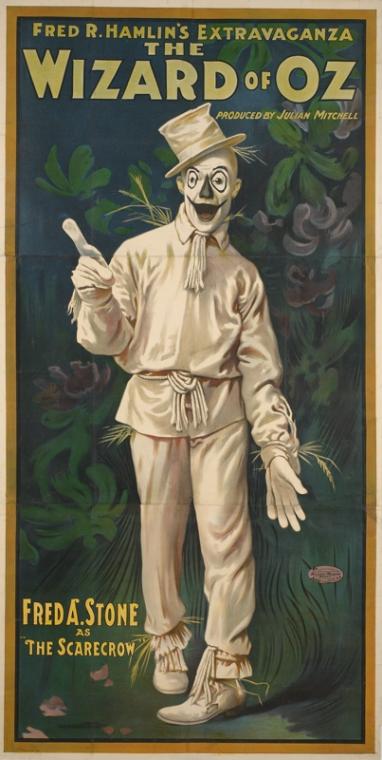Musical of the Month
Musical of the Month: The Wizard of Oz (1903)

There are plenty of (mostly) rational adults who remain as obsessed with the world of Oz as I was as a child, but as I entered pre-adolescence the Oz books went into the basement and I, like any normal tween-age boy, became more interested in well…the Sherlock Holmes series by Sir Arthur Conan Doyle (but that’s another story for another time). I mostly forgot my visits across the Deadly Desert into Munchkinland until, several years ago, on a visit to a favorite independent bookstore in Annapolis, Maryland I happened upon Mark Evan Swartz’s excellent book “Oz Before the Rainbow”, which chronicles the many stage and screen adaptations before the iconic 1939 movie. In part, it was this book that inspired the Musical of the Month team to select one of the first such adaptations for our December Musical of the Musical.
In the coming days several Oz scholars and fans will be contributing blogs about the history of this particular text, and I fear that anything I could offer would be at best incomplete and more than likely inaccurate compared to their superior knowledge of the subject. I therefore leave most of the historical contextualization of this adaptation to them. I will only note that this play provides a fascinating look into one of the great American myths before it had fully solidified in the national consciousness. In this version of the story, the Lion is never described as Cowardly, never becomes a friend of Dorothy, and cannot speak. The Wicked Witch of the West never appears and so cannot be melted. There are no slippers, ruby, silver, or otherwise, and Dorothy’s journey to find her way home is often eclipsed by a story about a political rebellion in the Land of Oz. Despite being written by the creator of the land of Oz, the script just doesn’t feel very Oz-like.

In that movie, before we see Dorothy and Toto running down the dusty, sepia, Kansas road, a card appears which reads
For nearly forty years this story has given faithful service to the Young in Heart; and Time has been powerless to put its kindly philosophy out of fashion. To those of you who have been faithful to it in return...and to the Young in Heart...we dedicate this picture.
It has now been over a century since that first cyclone, but allowing for this adjustment in the time, I would like to appropriate these words for this first web publication of the first dramatic adaptation of this story. To all those who still carry your Oz club cards, and to those who remember them fondly, I dedicate this Musical of the Month. Happy Holidays.
The text below was transcribed by project assistant Ann Fraistat from the 1903 copyright deposit at the Library of Congress and encoded for electronic publication by Doug Reside. Special thanks to project advisor Larry Moore who provided me with a photocopy of the Library of Congress text.
| File type | What it's for |
|---|---|
| EPUB | (Most ebook readers, except Kindle) |
| (Computer and Kindle) | |
| HTML | (Web browser) |
| Plain text | (Almost any digital device) |
| TEI | (Digital Humanities geeks) |
Read E-Books with SimplyE
 With your library card, it's easier than ever to choose from more than 300,000 e-books on SimplyE, The New York Public Library's free e-reader app. Gain access to digital resources for all ages, including e-books, audiobooks, databases, and more.
With your library card, it's easier than ever to choose from more than 300,000 e-books on SimplyE, The New York Public Library's free e-reader app. Gain access to digital resources for all ages, including e-books, audiobooks, databases, and more.
If you don’t have an NYPL library card, New York State residents can apply for a digital card online or through SimplyE (available on the App Store or Google Play).
Need more help? Read our guide to using SimplyE.
Comments
Thank You!
Submitted by David Lee Ingersoll (not verified) on December 14, 2011 - 12:37pm
The wonderful, alarming, amazing land of Oz
Submitted by Andrea Lipinski (not verified) on December 14, 2011 - 11:19pm
Remember the Cartoon from the Early 1960s?
Submitted by SPF (not verified) on August 15, 2017 - 10:47am
Thank you!
Submitted by Barbara (not verified) on December 15, 2011 - 1:21am
You're welcome!
Submitted by Doug Reside on December 15, 2011 - 4:29pm
You're reading my mind!
Submitted by Christopher Caggiano (not verified) on December 31, 2011 - 12:37pm